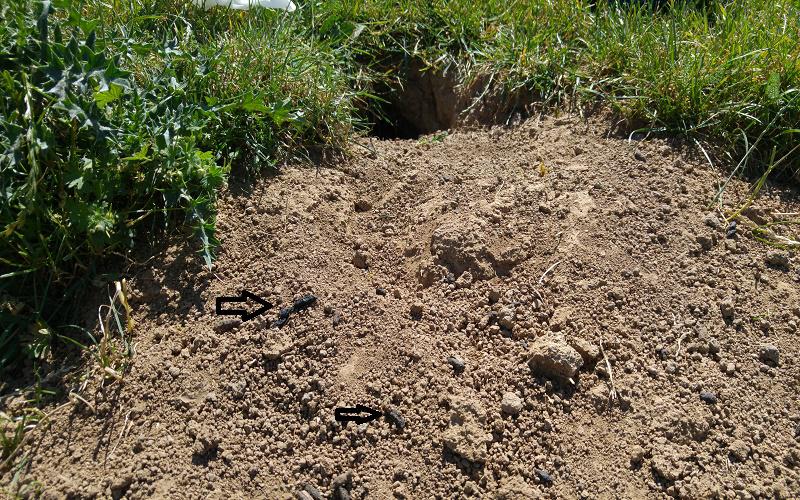Maja Arok
Other projects
29 May 2014
Research and Conservation – Building a Better Future for European Ground Squirrel (Spermophilus citellus) in Serbia
The main aim of this project is to, through investigation of EGS feeding habits and education, enhance conservational efforts toward this species.

Faecal pellets outside the EGS burrow entrance.
European Ground Squirrel (Spermophilus citellus) is in great need of conservational measures throughout its whole range. The main threat is habitat destruction and fragmentation due to expanding of agricultural land. Because of this most of EGS populations are in the vicinity of arable land and, being that these animals are rodents, they are often considered by humans an immediate threat to crops. This kind of thinking still exists in Serbia and animals are being killed despite their protection by the law - as a strictly protected species. Because of this, complete feeding habits research of Spermophilus citellus in this region is necessary. All previous research of this matter in Serbia is old and incomplete but are pointing to conclusion that EGS is not pest for crops. After the research phase, education of local residents on EGS ecology will take place. With this, we are hoping not only to educate people of EGS but also to engage them in protection of this endangered species.
Feeding analysis will require collecting plant and faecal samples from the field. Then, in laboratory plant samples will be compared with any plant epidermis in faecal pellets. This comparison will provide a checklist of all the plants that EGS is using in its feeding. Collecting of the samples will take place in four localities (two mountain meadows and two saline lowland pastures) in Vojvodina region. Mountain meadows and saline pastures are two main habitat types for EGS in Serbia.
Education will primarily be aimed toward children in order to explain to them the importance of biodiversity conservation and try to engage them in our cause of protecting this animals. Education will focus not only on results of our research but also on all threats and conservation problems that EGS is encountering.
In addition to research and education, pasture near Neradin will be restored. This part will include involvement of local residents and students NGOs. Targeted habitat is being overgrown in dog rose and mayflower and we plan to cut the majority of this plants and slow down this succession which is harmful for the squirrels.
Our conservation efforts toward EGS will not only benefit them but also endangered birds of prey in this region, which are preying on EGS specimens.